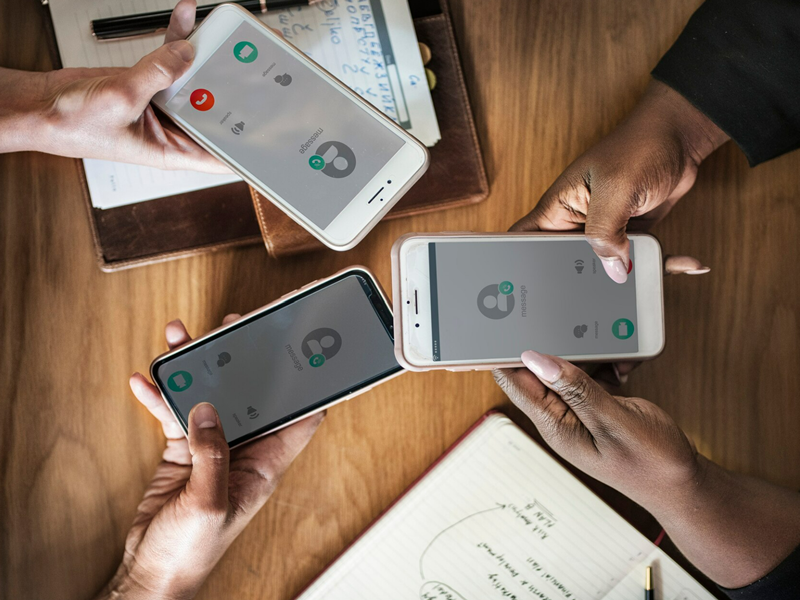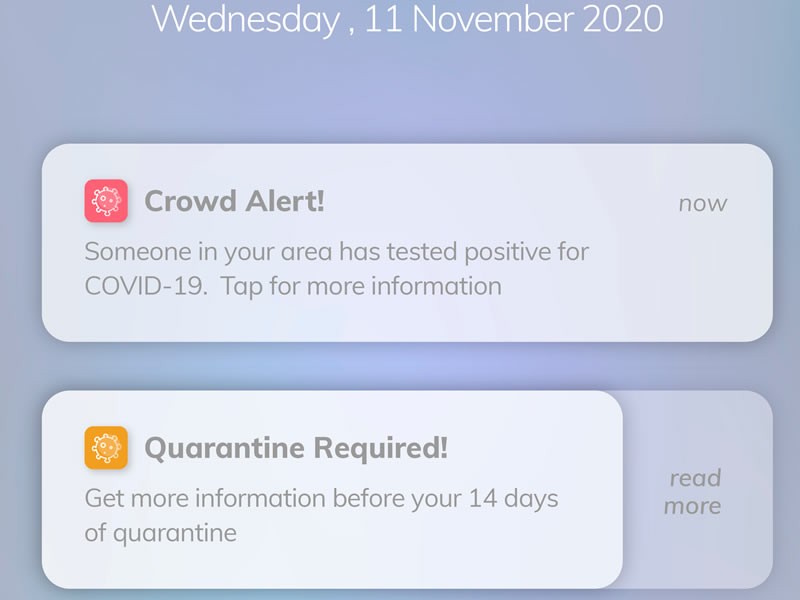Insight Blog
Agility’s perspectives on transforming the employee's experience throughout remote transformation using connected enterprise tools.
12 minutes reading time
(2348 words)
Five Ways to Drive Mobile App Engagement and User Retention
Elevate your mobile app's engagement and retention using these top 5 best practices. Capture more users, craft a potent strategy, and propel your solution towards success.
In an increasingly competitive digital landscape, maintaining high user engagement is integral for all businesses, especially mobile apps. Having your customers return to your app day after day is critical for both the success and sustainability of your mobile application.
Engagement doesn't simply mean downloads.
Rather, it requires a continual back-and-forth interaction between the app and its users. This interaction often includes actions like exploring new features, making purchases, or sharing app content. To achieve these interactions effectively, investing in professional mobile app development services can ensure your app is optimized for user engagement and retention.
- Higher user engagement may increase in-app purchases and boost revenue.
- It can enhance customer loyalty and user retention.
- A well-engaged user can be a powerful advocate for your app.
Your app's success hinges greatly on how engaged your users are. A high-engagement app tends to have better customer satisfaction, increased loyalty, and superior word-of-mouth influencer marketing, enhancing brand reputation and long-term success.
What Is Mobile App Engagement?
When in the process of choosing the most suitable intranet software for your organization, it is imperative to carefully evaluate your priorities and specific needs.
- Are you envisioning hosting large-scale live meetings as a key component of your organizational communication strategy?
- Do you place high value on the presence of a social feed to facilitate swift and interactive feedback among team members?
- Are detailed analytics reports a crucial requirement for steering your business decisions effectively?
- And, perhaps, which method of task organization aligns most seamlessly with the operational efficiency goals you've set?
Each intranet solution mentioned possesses its own set of advantages and drawbacks, catering to different organizational requirements.
For instance, Yammer stands out for its excellence in accommodating a considerable number of users in a video call scenario. On the other hand, employee app AgilityPortal offers a unique feature allowing participation in both synchronous and asynchronous meetings, providing flexibility in communication modes.
When making decisions about the appropriate intranet software, it is vital to consider the following factors:
- Scalability: Choose an intranet software that exhibits scalability, capable of growing in tandem with your long-term business objectives.
- Cost: Evaluate the pricing structure per user of the intranet software, ensuring alignment with your organization's budget constraints.
- User-friendliness: Assess how intuitively your organization can navigate and effectively utilize the intranet software, promoting widespread adoption.
- Team Connectivity: Determine the intranet software's effectiveness in fostering a sense of connection among your geographically dispersed team members, crucial for collaborative success.
Once you have finalized your choice of intranet software, consider further enhancing its capabilities by integrating it with productivity tools and relevant websites.
Rest assured, the investment in an intranet will undoubtedly prove beneficial, elevating your organizational communication and collaboration to new heights.
For deeper insights into intranet strategies and best practices, be sure to explore the AgilityPortal Insight Blog—your go-to resource for practical guidance and expert tips. A key step in enhancing your app's performance is mobile app analytics integration, which enables teams to monitor user behavior, pinpoint drop-off points, and fine-tune engagement strategies right from the start.
What Is a User Retention?
The concept of user retention may vary across different companies, each establishing its own set of standards and benchmarks for measurement. Broadly, it can be defined as the percentage of users who revisit the app within three months after their initial session.
A higher user retention value signifies a greater proportion of the audience converting into loyal users, demonstrating sustained engagement with the application.
When considered collectively, metrics such as mobile app engagement and user retention provide valuable insights into how effectively an app aligns with user expectations and its level of stickiness in capturing user interest.
When considered collectively, metrics such as mobile app engagement and user retention provide valuable insights into how effectively an app aligns with user expectations and its level of stickiness in capturing user interest.
Understanding these metrics is crucial as they serve as indicators of user satisfaction and loyalty. The more users you retain and keep engaged, the greater the potential for monetizing your application, presenting increased opportunities for revenue generation.
Furthermore, it's important to delve deeper into user behavior patterns, analyzing the reasons behind their return to the app. Identifying key features or content that resonate well with users can guide strategic decisions for future enhancements.
Furthermore, it's important to delve deeper into user behavior patterns, analyzing the reasons behind their return to the app. Identifying key features or content that resonate well with users can guide strategic decisions for future enhancements.
Additionally, a comprehensive understanding of user retention metrics can aid in refining marketing strategies, user experience design, and overall app performance, contributing to the long-term success and profitability of the application.
In essence, user retention metrics extend beyond mere numerical values; they provide a narrative about user satisfaction, engagement, and the overall health of the app in the competitive digital landscape. For those looking to further enhance these metrics, partnering with a trusted app development company in USA can offer tailored solutions that drive both engagement and long-term retention.
In essence, user retention metrics extend beyond mere numerical values; they provide a narrative about user satisfaction, engagement, and the overall health of the app in the competitive digital landscape. For those looking to further enhance these metrics, partnering with a trusted app development company in USA can offer tailored solutions that drive both engagement and long-term retention.
As you continue to monitor and optimize these metrics, you position your application for sustained growth and success in the ever-evolving mobile app ecosystem.
Mobile push notifications stand as a pivotal tool for maintaining user engagement with your app, playing a crucial role in keeping your audience connected and invested.
Let's delve into the definition and significance of mobile push notifications, exploring the benefits they offer in enhancing user interaction and brand connection.
In essence, mobile push notifications are messages that appear on a user's mobile device, even when the app is not actively in use. Crafted to captivate users' attention, these notifications serve the purpose of rekindling interest, reengaging users with your app, and establishing a continuous connection to your brand.
Whether it's an alert unveiling a new feature, a personalized offer tailored to individual preferences, or a gentle reminder prompting a specific action, push notifications act as a vital conduit in ensuring your app remains at the forefront of users' minds.
The advantages of utilizing push notifications for user engagement are multifaceted:
- Retention of User Interest: Push notifications play a crucial role in preventing users from abandoning the app by consistently providing relevant and timely updates, thereby maintaining user interest over time.
- Driving Specific Actions: These notifications serve as effective prompts, driving users to take specific actions within the app, whether it's exploring new features, making a purchase, or completing a desired activity.
- Direct Communication Channel: By enabling a direct line of communication between your brand and users, push notifications establish an immediate and personal connection. This facilitates real-time engagement and ensures that important messages reach your audience promptly.
- Data Insights for Strategy Refinement: Push notifications also offer valuable data insights that can be instrumental in refining your overall engagement strategy. Analyzing user responses to notifications helps in understanding preferences, optimizing content, and tailoring future communication for enhanced effectiveness.
Extending beyond mere alerts, push notifications become a dynamic means of fostering continuous interaction and brand loyalty.
As you leverage this tool strategically, you not only retain users' attention but also cultivate a more personalized and responsive user experience, ultimately contributing to the sustained success of your app in a competitive digital landscape. In your pursuit to keep your app users hooked, effectively using mobile push notifications is essential.
How to Increase Mobile App Engagement and User Retention
There isn't a one-size-fits-all formula for capturing user attention, time, and loyalty, as it varies depending on the app's nature and business niche.
However, we have identified five universal approaches to enhance mobile app engagement and user retention, providing a foundation for building an effective strategy for your product.
Follow us and access great exclusive content everyday: Follow us on Google News
1. Personalized Recommendations
Personalization is the key to establishing a meaningful connection with your users. Just as a physical store requires a personalized approach to dealing with customers, so does an app.
Today's users have a vast number of options and short attention spans. If you want them to stay engaged with your app, they need to feel seen and understood. Personalized alerts or suggestions based on their activity can quickly pique their interest and draw them in. Additionally, these targeted recommendations can:
- Improve the overall user experience.
- Make actions within the app feel more relevant and meaningful.
- Increase the sense of individual attention, promoting continued use.
Data analysis is an invaluable tool for personalization. By tracking user behavior within your app, you can get an idea of their preferences and tailor recommendations accordingly. You can analyze:
- Past purchases or interactions.
- Frequency and duration of use.
- Patterns in navigation or searches.
By leveraging this data, you can provide a unique and engaging user experience each time the app is opened.
2. Gamification
Gamification is a popular strategy that promotes active interaction with your app, fostering ongoing user engagement. It involves applying game design elements in non-game contexts, thus creating a fun, immersive experience that keeps users coming back for more.
This strategy offers several benefits, such as increased user retention, improved app interaction, and superior user experience.
At its core, gamification involves incorporating game elements into apps to make them more engaging and enjoyable. Reward systems, leaderboards, and challenges are common aspects of gamification.
The primary advantage of this engagement strategy is that it leverages the inherent human love for games and competition. It boosts users' motivation to engage with the app, motivates them to achieve app-related goals, and even promotes social interaction in multiplayer scenarios.
Several apps have effectively used gamification to boost user engagement.
Here are just a few examples:
- Duolingo: This learning app uses gamified quizzes, streak counts, and achievements to motivate continuous language learning.
- Fitbit: An activity-tracking app that uses badges, challenges, and leaderboards to promote healthy behavior among users.
- Starbucks: Their app offers a rewards system where users earn stars that can be redeemed for free beverages or food.
These examples illustrate how gamification can make the app experience more rewarding and fun, promoting sustained user engagement.
You may also like: Best Apps for Employees: UPDATED 2022 – A Complete Guide
3. Incentives and Rewards
Incentives and rewards are the oldest tricks in the book when it comes to promoting engagement, and rightfully so. When users know they will get something in return for their time and effort, they are more likely to use the app and engage with its features.
These incentives can be anything from discounts and cashback to even exclusive content or benefits. Rewards stimulate users' innate love of completion and achievement.
They can help drive activities like completing a profile, making a first purchase, or reaching certain milestones within the app.
Designing an enticing reward system starts with understanding your users' behavior and crafting an offer that aligns with their interests.
Some popular strategies include the following:
- Points systems: Users earn points through engagement that they can redeem for rewards.
- Tier programs: These programs offer better rewards as users engage more with the app.
- Non-monetary incentives: These could be badges, ranks, or unlocking special features.
Lastly, remember to make the reward system transparent and easy for your users to understand.
4. Regular Updates and New Features
Regularly updating your app and introducing new features are crucial steps to keep your users engaged. These act as stalwarts that not only fix the bugs and improve app functionalities but also offer fresh, exciting content that users can explore.
The addition of new features and regular updates positively impact user engagement in several ways. They assure users that their experience is valued and the app is consistently improved for better usability.
Plus, new features:
- Spark curiosity and interest, enticing users to use the app more frequently
- Give users additional reasons to keep using the app
- Show commitment to user satisfaction and a continuous effort to improve
Effective communication of updates and new features is key. Consider these tips:
- Use mobile push notifications to alert users of the latest updates
- Provide a detailed and easy-to-understand overview of new features within the app
- Use social media, email newsletters, or blog posts to discuss these updates further.
Remember, keeping users informed about new changes enhances their experience and engagement with your app.
Free ebook: How To Get Your Intranet Off The Ground
5. Interactive and Personalized Notifications
The cornerstone of user engagement begins with communication, and what better way than through interactive and personalized notifications? Not just any mundane, automated messages, but well-crafted, targeted notifications that speak directly to your users.
Using interactive and personalized notifications provides your users with a sense of importance. It shows them that you value them and their preferences. A notification addressing a user by name or tailored to their app activity brings about a sense of belonging which can ignite increased app use.
- Increases user engagement and retention
- Creates a personalized user experience
- Can trigger immediate action from the user
Leverage the power of mobile push notifications. They serve as subtle reminders for users to interact with your app, especially when tailored to their needs.
- Use Geofencing for local reminders or alerts
- Use users' app behavior to customize notifications
- Implement A/B testing to understand the most engaging notification strategies
Engaging your users isn't as daunting as it may seem. By implementing unique, personalized touches such as in-app activities and notifications, you foster a bond between your app and its users.
Not only does this bond increase user satisfaction, but it also boosts user retention, making your app a popular choice for many.
Implement these strategies to keep your users engaged
To conclude, it's not just enough just to implement these strategies. It is vital to monitor performance and usage metrics constantly to understand user behavior better.
This will give you insights into what's working, what's not, and where changes might need to happen.
When your app is constantly evolving to meet user needs based on actual data, you're setting yourself up for long-term success. Keep your users engaged, provide them with a delightful experience, and retain your app's relevance.
Categories
Blog
(2633)
Business Management
(325)
Employee Engagement
(212)
Digital Transformation
(176)
Growth
(120)
Intranets
(119)
Remote Work
(61)
Sales
(48)
Collaboration
(36)
Project management
(29)
Culture
(28)
Customer Experience
(26)
Knowledge Management
(21)
Leadership
(20)
Comparisons
(6)
News
(1)
Ready to learn more? 👍
One platform to optimize, manage and track all of your teams. Your new digital workplace is a click away. 🚀
Free for 14 days, no credit card required.













